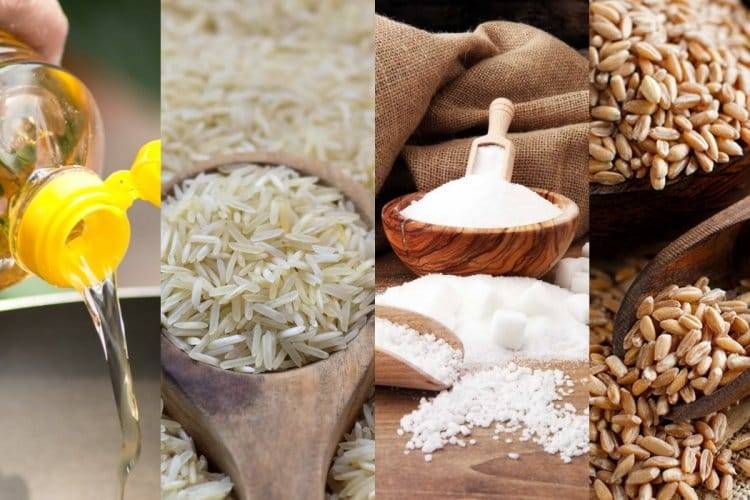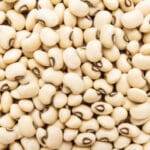Main Points In Hindi (मुख्य बातें – हिंदी में)
यहां नीचे दिए गए 3 से 5 मुख्य बिंदु हैं:
-
वनस्पति तेल की मूल्य वृद्धि: संयुक्त राष्ट्र के खाद्य एवं कृषि संगठन (एफएओ) ने बताया कि वनस्पति तेल की कीमतों में तेजी के कारण, अक्टूबर में विश्व खाद्य वस्तुओं की कीमतें 18 महीनों में अपने उच्चतम स्तर पर पहुंच गईं, जिसमें एफएओ खाद्य मूल्य सूचकांक 127.4 अंक रहा, जो पिछले साल की तुलना में 5.5 प्रतिशत अधिक है।
-
गेहूं और मक्के की कीमतों में वृद्धि: अक्टूबर में एफएओ अनाज मूल्य सूचकांक में 0.9 प्रतिशत की वृद्धि हुई, जिसमें गेहूं और मक्के की निर्यात कीमतों में वृद्धि शामिल है। यह वृद्धि मुख्य रूप से उत्तरी गोलार्ध में प्रतिकूल मौसम और भू-राजनीतिक तनाव के कारण हुई है।
-
चावल की कीमतों में गिरावट: चावल का मूल्य अक्टूबर में 5.6 प्रतिशत गिर गया, जो भारत द्वारा गैर-टूटे हुए चावल पर निर्यात प्रतिबंध हटाने के बाद स्पर्द्धा बढ़ने के कारण है।
-
चीनी और डेयरी उत्पादों की कीमतों में वृद्धि: एफएओ चीनी मूल्य सूचकांक में 2.6 प्रतिशत और डेयरी मूल्य सूचकांक में 1.9 प्रतिशत की वृद्धि हुई। उच्च अंतरराष्ट्रीय कच्चे तेल की कीमतों और पनीर तथा मक्खन की बढ़ती मांग के कारण यह वृद्धि हुई।
- 2024 में वैश्विक अनाज उत्पादन का अनुमान: एफएओ की नई अनाज आपूर्ति और मांग संक्षिप्त के अनुसार, 2024 में वैश्विक अनाज उत्पादन का अनुमान पिछले वर्ष की तुलना में 0.4 प्रतिशत घटकर 2848 मिलियन टन होने का है, जिसमें चावल उत्पादन में बढ़ोतरी की उम्मीद है जबकि मक्के का उत्पादन घट सकता है।
Main Points In English(मुख्य बातें – अंग्रेज़ी में)
Here are the main points regarding the recent report from the Food and Agriculture Organization (FAO):


-
Global Food Prices Surge: The FAO reported that global food prices reached their highest level in 18 months in October, largely due to a sharp increase in vegetable oil prices. The FAO Food Price Index averaged 127.4 points, a 2.0% increase from September and 5.5% higher than the previous year, although it remained 20.5% below the peak level of March 2022.
-
Vegetable Oil Prices Driving Changes: The FAO Vegetable Oil Price Index saw a significant increase of 7.3% in October, reaching a two-year high mainly due to concerns regarding production for oils such as palm, soy, sunflower, and rapeseed.
-
Cereal Prices Variability: The FAO Cereal Price Index rose by 0.9% due to increasing export prices for wheat and maize, driven by adverse weather conditions in key producing regions and rising tensions in the Black Sea area. Conversely, the rice price index fell by 5.6% due to increased competition following India’s removal of export bans on non-broken rice.
-
Production Outlook for 2024: The FAO projected a slight decrease in global grain production for 2024, estimated to be around 2,848 million tons, with an expected increase in wheat production due to favorable conditions in Asia compensating for declines in Europe. However, maize production is expected to decrease due to adverse weather conditions.
- Increased Consumption and Trade Trends: There is an anticipated increase in global grain consumption in 2024/25, driven by higher demand for rice and wheat. Meanwhile, international trade in grain is expected to decrease by 3.9%, reflecting a projected growth in rice trade contrasted by declines in wheat and coarse grain trading.
Complete News In Hindi(पूरी खबर – हिंदी में)
संयुक्त राष्ट्र के खाद्य एवं कृषि संगठन (एफएओ) ने शुक्रवार को बताया कि वनस्पति तेल की कीमतों में तेज वृद्धि के कारण विश्व खाद्य वस्तुओं की कीमतें अक्टूबर में 18 महीनों में अपने उच्चतम स्तर पर पहुंच गईं।
संयुक्त राष्ट्र के खाद्य एवं कृषि संगठन (एफएओ) ने शुक्रवार को बताया कि वनस्पति तेल की कीमतों में तेज वृद्धि के कारण विश्व खाद्य वस्तुओं की कीमतें अक्टूबर में 18 महीनों में अपने उच्चतम स्तर पर पहुंच गईं। एफएओ खाद्य मूल्य सूचकांक, जो विश्व स्तर पर व्यापारित खाद्य वस्तुओं के एक सेट की अंतरराष्ट्रीय कीमतों में मासिक परिवर्तन को ट्रैक करता है, अक्टूबर में औसतन 127.4 अंक था, जो सितंबर से 2.0 प्रतिशत और एक साल पहले के मूल्य से 5.5 प्रतिशत अधिक था। फिर भी, सूचकांक मार्च 2022 के शिखर से 20.5 प्रतिशत नीचे रहा।
एफएओ वनस्पति तेल मूल्य सूचकांक अक्टूबर में 7.3 प्रतिशत बढ़ गया, जो मुख्य रूप से उत्पादन के बारे में चिंताओं के कारण पाम, सोया, सूरजमुखी और रेपसीड तेल के बढ़ते भाव के परिणामस्वरूप दो साल के उच्चतम स्तर पर पहुंच गया।
गेहूं और मक्के की कीमतें बढ़ीं, चावल नरम
गेहूं और मक्के की बढ़ती निर्यात कीमतों के कारण अक्टूबर में एफएओ अनाज मूल्य सूचकांक में 0.9 प्रतिशत की वृद्धि हुई। वैश्विक गेहूं की कीमतें प्रमुख उत्तरी गोलार्ध के निर्यातकों में प्रतिकूल मौसम की स्थिति के साथ-साथ रूसी संघ में एक अनौपचारिक मूल्य स्तर की फिर से शुरूआत और काला सागर क्षेत्र में बढ़ते तनाव से प्रभावित हुईं।
वैश्विक मक्के की कीमतों में भी वृद्धि हुई, जो आंशिक रूप से मजबूत घरेलू मांग और ब्राजील में नदी के निम्न स्तर के कारण परिवहन चुनौतियों के कारण हुई। इसके विपरीत, अक्टूबर में एफएओ ऑल राइस प्राइस इंडेक्स में 5.6 प्रतिशत की गिरावट आई, जो भारत द्वारा गैर-टूटे हुए चावल पर निर्यात प्रतिबंध हटाने के बाद निर्यातकों के बीच बढ़ती प्रतिस्पर्धा की उम्मीदों से प्रेरित कम इंडिका चावल कोटेशन को दर्शाता है।
लंबे समय तक शुष्क मौसम की स्थिति के बाद ब्राजील में 2024/25 उत्पादन दृष्टिकोण पर लगातार चिंताओं के बीच एफएओ चीनी मूल्य सूचकांक में 2.6 प्रतिशत की वृद्धि हुई। बढ़ती अंतरराष्ट्रीय कच्चे तेल की कीमतों ने भी अधिक गन्ने को इथेनॉल उत्पादन की ओर स्थानांतरित करके चीनी उद्धरणों में वृद्धि में योगदान दिया, जबकि संयुक्त राज्य अमेरिका डॉलर के मुकाबले ब्राजीलियाई रियल के कमजोर होने से वृद्धि सीमित हो गई।
एफएओ डेयरी मूल्य सूचकांक अक्टूबर में 1.9 प्रतिशत बढ़ा, जो पिछले साल के समान समय के स्तर से औसतन 21.4 प्रतिशत अधिक है। यह वृद्धि मुख्य रूप से अंतरराष्ट्रीय पनीर और मक्खन की ऊंची कीमतों के कारण हुई, जबकि दूध पाउडर के कोटेशन में गिरावट आई।
चावल और गेहूं का उत्पादन बढ़ेगा, मक्के का उत्पादन घट सकता है
शुक्रवार को जारी एफएओ की नई अनाज आपूर्ति और मांग संक्षिप्त के अनुसार, 2024 में वैश्विक अनाज उत्पादन पिछले वर्ष से लगभग 0.4 प्रतिशत घटकर 2848 मिलियन टन होने का अनुमान है, जो रिकॉर्ड पर दूसरा सबसे बड़ा उत्पादन है।
क्षेत्र विस्तार और अनुकूल मौसम की स्थिति के परिणामस्वरूप एशिया में उत्पादन में बढ़ोतरी से विश्व गेहूं उत्पादन में वृद्धि होने की उम्मीद है, जो यूरोप में प्रमुख उत्पादकों के बीच बड़ी गिरावट की भरपाई से कहीं अधिक है। वैश्विक मोटे अनाज उत्पादन में 2023 के रिकॉर्ड स्तर से गिरावट का अनुमान है, जिसका मुख्य कारण प्रतिकूल मौसम की स्थिति के कारण मक्का उत्पादन में बड़ी फसल है। इस बीच, 2024/25 सीज़न में विश्व चावल उत्पादन 538.9 मिलियन टन की रिकॉर्ड ऊंचाई तक पहुंच सकता है, जो रिकॉर्ड-तोड़ रोपण से बढ़ा है।
चावल और गेहूं की बढ़ती खाद्य खपत के कारण 2024/25 में विश्व अनाज का उपयोग 0.5 प्रतिशत बढ़कर 2,857 मिलियन टन होने का अनुमान है। वैश्विक अनाज भंडार 0.6 प्रतिशत बढ़कर 889 मिलियन टन होने का अनुमान है, जिसका मुख्य कारण चावल के भंडार में अपेक्षित विस्तार है। इसके परिणामस्वरूप वैश्विक अनाज स्टॉक-टू-उपयोग अनुपात 30.6 प्रतिशत हो जाएगा, जो पांच और दस साल के औसत स्तर के करीब होगा।
अनाज का अंतर्राष्ट्रीय व्यापार अब 485 मिलियन टन होने का अनुमान है, जो 2023/24 के स्तर से 3.9 प्रतिशत संकुचन दर्शाता है। चावल का वैश्विक व्यापार बढ़ने का अनुमान है, जबकि गेहूं और मोटे अनाज का व्यापार घटने का अनुमान है।
Complete News In English(पूरी खबर – अंग्रेज़ी में)


The Food and Agriculture Organization (FAO) of the United Nations reported on Friday that prices of global food items reached their highest level in 18 months this October, mainly due to a significant rise in vegetable oil prices. The FAO’s Food Price Index averaged 127.4 points in October, marking a 2.0% increase from September and a 5.5% increase from a year earlier. However, this index remains 20.5% lower than its peak in March 2022.
In October, the FAO Vegetable Oil Price Index surged by 7.3% due to concerns about production, leading to higher prices for palm, soybean, sunflower, and rapeseed oils.
Wheat and Corn Prices Rise, Rice Prices Soften
Wheat and corn prices increased in October, causing a 0.9% rise in the FAO Grain Price Index. Global wheat prices were affected by adverse weather conditions in major Northern Hemisphere exporting countries, as well as renewed high prices in Russia and tensions in the Black Sea region.
Corn prices also rose due to strong domestic demand and transportation challenges caused by low river levels in Brazil. Conversely, the FAO All Rice Price Index fell by 5.6% in October as competition increased among exporters after India lifted its export ban on non-basmati rice, leading to lower prices for indica rice.
The FAO Sugar Price Index increased by 2.6% due to ongoing concerns about Brazil’s production outlook following prolonged dry weather. Rising international crude oil prices also shifted more sugarcane to ethanol production, contributing to higher sugar prices, although the drop of the Brazilian real against the U.S. dollar limited this increase.
The FAO Dairy Price Index rose by 1.9% in October, averaging 21.4% higher than the previous year, mainly due to high international prices for cheese and butter, despite a decline in milk powder prices.
Rice and Wheat Production Set to Increase, Corn Production May Decrease
According to the latest FAO report on grain supply and demand, global grain production is projected to decrease by about 0.4% in 2024, hitting 2,848 million tons, still making it the second-largest production on record.
In Asia, an increase in production is expected due to area expansion and favorable weather, which will boost world wheat production, offsetting declines from major European producers. However, production of coarse grains, particularly corn, is estimated to drop from 2023’s record levels due to adverse weather. On the other hand, rice production in 2024/25 may reach a new record high of 538.9 million tons, fueled by record planting.
The growing food consumption of rice and wheat is expected to increase global grain use by 0.5% to 2,857 million tons in 2024/25. Global grain stocks are expected to increase by 0.6% to 889 million tons, largely due to anticipated rice stock expansions, resulting in a global grain stock-to-use ratio of 30.6%, which is close to the averages from the past five to ten years.
International grain trade is estimated to be 485 million tons, reflecting a 3.9% contraction from 2023/24 levels. While global rice trade is expected to grow, grain trading for wheat and coarse grains is projected to decline.








